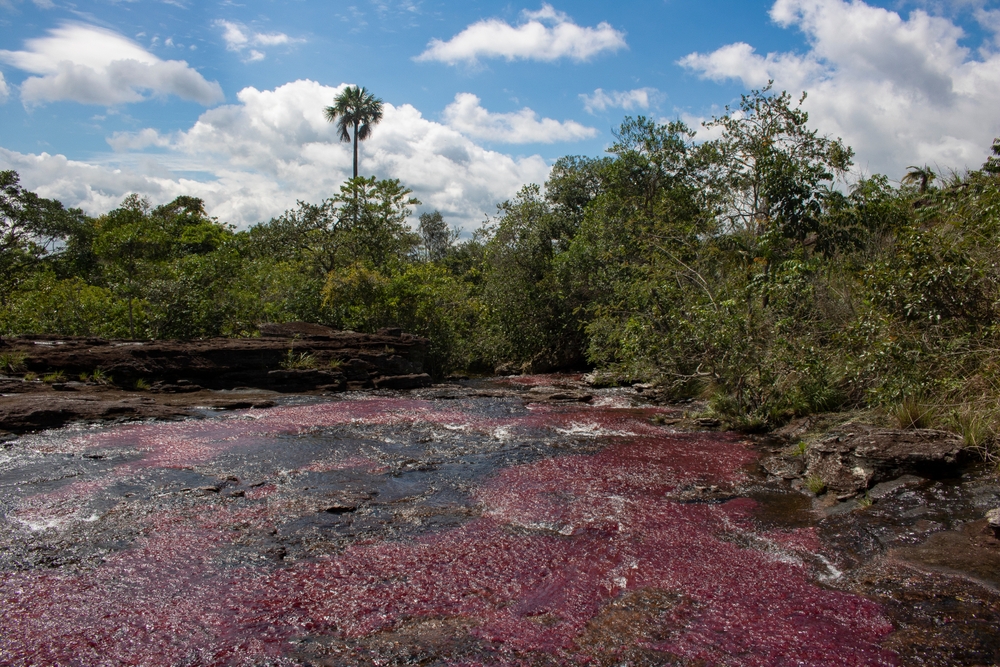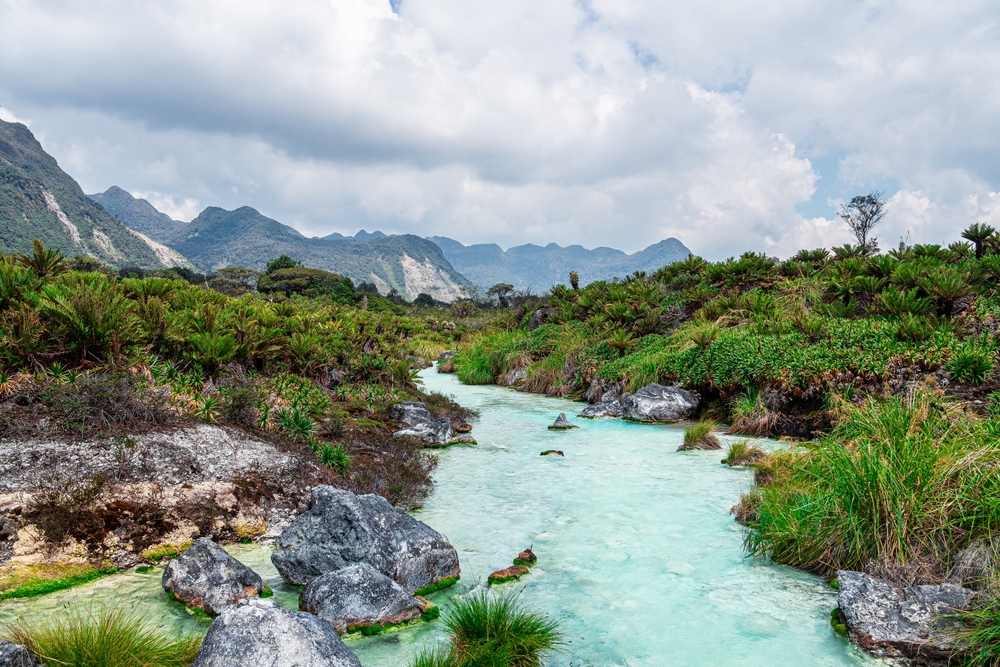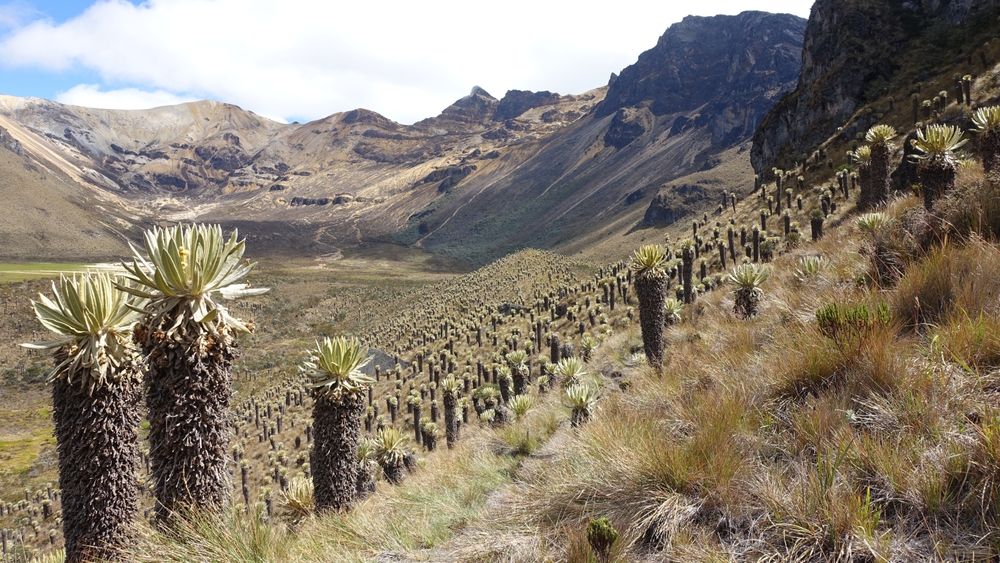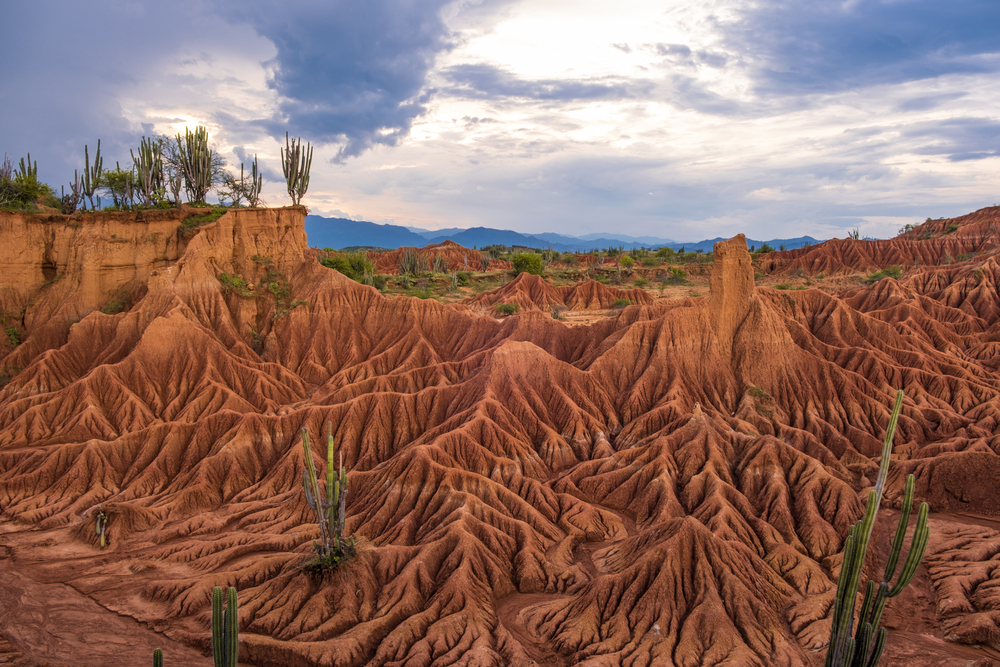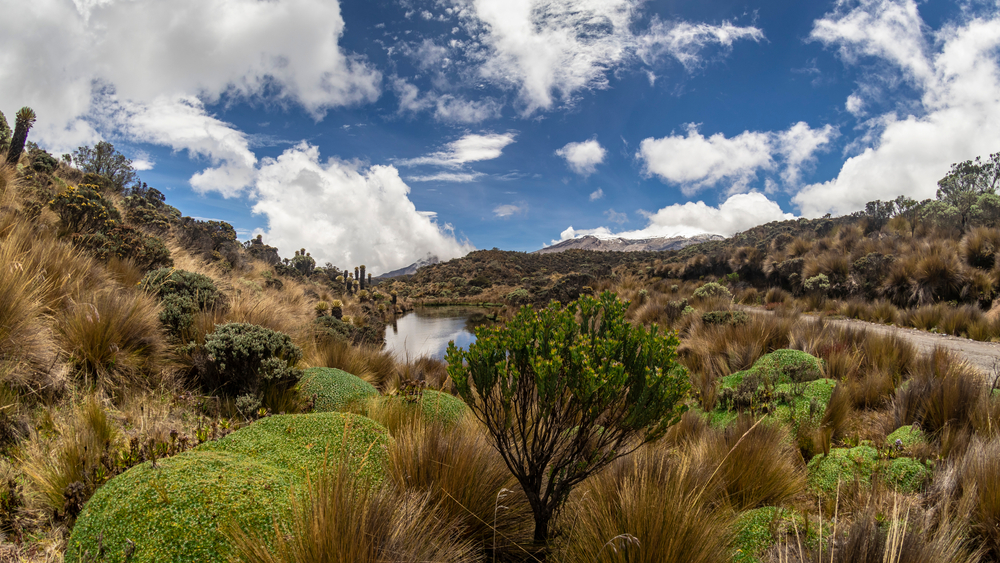Serrania de la Macarena Overview
Serranía de la Macarena National Park, known locally as Parque Nacional Natural Serranía de la Macarena, spans approximately 2,420 square miles (6,300 square kilometers) in central Colombia.
Located in the Meta Department, the park is a remarkable ecological crossroads where the Andes, Amazon, and Orinoco regions converge, creating one of the most biologically diverse areas in the world. This unique location fosters an extraordinary variety of landscapes, from lush rainforests and savannas to rocky plateaus and flowing rivers.
One of the park’s most famous features is Caño Cristales, often called the “River of Five Colors,” where aquatic plants create a stunning display of red, yellow, green, blue, and black hues during the rainy season. Other notable geographical features include rugged mountains, vast plains, and waterfalls such as Los Ochos and Caño Piedra, which contribute to the park’s dramatic scenery.
The park’s rich ecosystems support an incredible array of wildlife, making it a prime location for nature lovers and wildlife enthusiasts. Visitors may encounter jaguars, pumas, and giant otters, all of which roam the park’s dense forests and waterways. The region is also home to tapirs, deer, and howler monkeys, adding to its vibrant mammalian diversity.
Birdwatchers are particularly drawn to Serranía de la Macarena, as it boasts over 500 bird species, including the striking Andean cock-of-the-rock, harpy eagles, and macaws. The variety of birdlife, combined with the pristine environment, makes it one of the most rewarding destinations for avian observation in Colombia. Additionally, countless amphibians and reptiles thrive in the park’s humid climate, further enhancing its ecological significance.
Among the park’s most sought-after attractions, Caño Cristales remains the undisputed highlight, drawing visitors from around the world. The river’s seasonal transformation into a vibrant natural spectacle is an unparalleled sight, with its radiant colors created by the endemic Macarenia clavigera plants.
Beyond the river, the park offers breathtaking waterfalls, remote caves, and vast landscapes waiting to be explored. Activities such as hiking, birdwatching, and river tours allow visitors to engage deeply with the park’s natural beauty.
Due to conservation efforts, swimming in Caño Cristales is strictly regulated to preserve its delicate ecosystem, but nearby areas offer designated spots for those wanting to experience its crystal-clear waters.
Serranía de la Macarena faces significant conservation challenges, particularly from deforestation, illegal mining, and the encroachment of agriculture. However, conservation efforts by the Colombian government and environmental organizations have helped protect this fragile ecosystem.
Strict visitor limits and sustainable tourism initiatives have been implemented to minimize human impact. Local communities play an important role in the park’s conservation, as ecotourism provides economic opportunities that incentivize the protection of natural resources.
Ongoing research and monitoring efforts continue to assess the park’s biodiversity, ensuring its long-term preservation.








































































